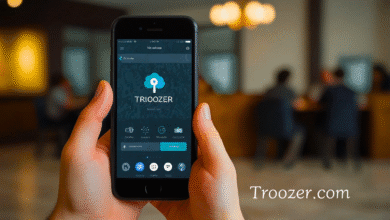JA449772842GB Exposed The Shocking Truth Behind This Dangerous Tracking Code

In the age of online shopping and doorstep deliveries, every consumer has become familiar with tracking numbers — those random combinations of letters and digits that hold the promise of a parcel on its way. But sometimes, a seemingly normal code like JA449772842GB begins circulating, raising eyebrows and questions. What does this code mean? Is it a real parcel number, or something else entirely? Let’s take a deep dive into the mystery of JA449772842GB — its background, the reasons behind its growing attention online, and why consumers should handle it with caution.
Introduction to JA449772842GB
At first glance, JA449772842GB looks like an ordinary tracking number. It has two capital letters, a sequence of numbers, and ends with “GB,” which usually stands for “Great Britain.” This format mirrors legitimate tracking codes issued by couriers like Royal Mail or Parcelforce, which often use the “GB” suffix for items processed in or shipped from the United Kingdom. That resemblance is what makes the code so convincing — and possibly dangerous.
However, as many have discovered, entering this code on official parcel-tracking websites yields no valid results. The number simply doesn’t exist in the system. It’s neither active nor registered with any recognized courier company. This discovery has led many to believe that JA449772842GB isn’t a real parcel identifier, but rather a fabricated number used as part of a phishing or scam attempt disguised as a delivery notification.
The Rise of Delivery Scams
In recent years, the world has seen an explosion of online shopping. With that growth, delivery-related scams have also multiplied. Cybercriminals have learned that people are always expecting a parcel — whether it’s a birthday gift, a new phone, or a fashion order — and that expectation creates the perfect opportunity for deception. They send fake text messages or emails claiming that a delivery failed and that the recipient must click a link or pay a small fee to reschedule. These messages often include an authentic-looking code like JA449772842GB.
This tactic plays on human psychology. The code looks real, the message sounds urgent, and the amount requested is small — often just a few dollars or pounds — making victims less likely to question it. But the goal isn’t the payment itself. The real aim is to get victims to reveal their bank details or personal information, which can later be used for identity theft or larger financial fraud. Once scammers have access, they can exploit victims’ data in countless ways.
Bio Table
| Attribute | Details |
|---|---|
| Name / Code | JA449772842GB |
| Type | Tracking code / Scam identifier |
| Origin | Unknown; mimics UK courier formats |
| Purpose | Purported parcel tracking; often used in phishing scams |
| Status | Not recognized by legitimate courier systems |
| Risk Level | High – associated with potential financial fraud and data theft |
| Appearance | Alphanumeric code: 2 letters + 9 digits + GB suffix |
| Age | Recent emergence; widely reported in online scam alerts over the last few years |
| Associated Platforms | Email, SMS, social media messages |
| Action Recommended | Do not click links or provide personal/financial information; verify on official courier websites |
How the JA449772842GB Scam Works
The process usually begins with a text message, email, or social media alert. It reads something like, “Your parcel with tracking number JA449772842GB is awaiting redelivery. Please pay the outstanding delivery fee to release it.” A link follows — but that link doesn’t lead to a legitimate postal service. Instead, it redirects to a fraudulent website designed to mimic the layout of a trusted courier like Royal Mail or DHL. The page may feature real logos, realistic fonts, and even fake tracking interfaces.
Once you click the link, you’re asked to enter personal details — your name, address, phone number, and payment information. In some cases, the scam website even displays a fake “parcel in transit” screen to build credibility. As soon as you enter your data, it is transmitted to scammers who can use it to steal money, open unauthorized accounts, or sell your information to other criminals on the dark web.
What makes this type of scam dangerous is how subtle it seems. There are no threats, no dramatic warnings — just a calm message about a missed delivery. That quiet tone builds trust and urgency simultaneously. The inclusion of a “realistic” code like JA449772842GB reinforces the illusion.

Why Scammers Use Realistic Tracking Numbers
Scammers understand that believability is everything. Random numbers like “123456” would raise suspicion, but something structured like JA449772842GB feels authentic. The letters “JA” and “GB” look official and mimic real logistics formats. In fact, most legitimate Royal Mail tracking numbers also end in “GB.” This pattern tricks even cautious people into thinking the code must be real.
Additionally, scammers know that not every parcel appears immediately in a tracking system. They rely on this uncertainty — when users check the number online and see “Not found” or “Not yet registered,” they assume it’s a temporary system delay rather than a sign of fraud. That small window of doubt is all scammers need to succeed. By the time victims realize the truth, their data may already be compromised.
The Broader Impact on Consumers
Scams like JA449772842GB do more than just steal a few pounds from unsuspecting people — they damage trust. Every fake delivery message makes consumers more skeptical of legitimate ones. Small businesses that rely on online shipping can also suffer, as customers become hesitant to click on real tracking updates. On a global scale, postal and courier companies must now invest heavily in public awareness campaigns and cybersecurity systems to combat the rising tide of delivery-related fraud.
For the average person, this means learning to spot fake messages, verifying every link, and keeping personal information secure. It’s no longer safe to assume that a professional-looking message is genuine. In fact, the more polished it looks, the more carefully one should examine it.
Protecting Yourself from Fake Tracking Scams
The best defense against scams like JA449772842GB is vigilance. Never click on links in unsolicited texts or emails claiming to be from delivery services. If you think a parcel might genuinely be waiting, go directly to the courier’s official website by typing the URL yourself, not by following any link provided. There, you can safely enter your tracking number.
Always check the sender’s address — real couriers use verified domains (e.g., “@royalmail.com”), not random Gmail or shortened URLs. Also, legitimate delivery services will never ask for small “redelivery” fees through text links. Payments for shipping or customs are handled directly through the retailer or official postal portals.
If you suspect that you’ve fallen for such a scam, contact your bank immediately to freeze or monitor your accounts. Report the incident to local authorities or national cybersecurity hotlines. Changing your passwords and enabling two-factor authentication can also minimize long-term risks.
The Psychology of Trust in Digital Communication
What makes JA449772842GB so effective as bait isn’t the code itself, but the psychology behind it. Humans are naturally trusting of authority and patterns that look familiar. When a message includes a “realistic” number, our brains automatically link it to previous legitimate experiences — we’ve seen these codes before when tracking genuine parcels. This phenomenon is known as cognitive association, and scammers exploit it masterfully.
Moreover, online shopping has conditioned people to expect delivery notifications almost daily. Scammers use this habit to their advantage, sending messages that sound ordinary. Combined with a believable tracking ID, the scam becomes almost indistinguishable from reality.
A Closer Look at the Name “JA449772842GB”
While the code itself has no personal identity, it has gained a sort of online persona. People have searched for it, written about it, and discussed it across blogs and social platforms. In a strange way, JA449772842GB has become a symbol of digital awareness — a case study in how modern scams evolve.
If JA449772842GB were a person, you might say its “age” is recent — emerging in the last few years alongside the boom in online shopping. Its “appearance” is professional and structured — strong letters, ten digits, and a national suffix. Its “network” spans globally through the internet, connecting strangers who’ve experienced the same suspicious message. And its “net worth”? Ironically, it represents millions in potential losses that scammers could extract from unaware victims.
There’s an eerie charm to how an arbitrary code can take on such symbolic meaning. It reflects how digital culture assigns significance to strings of data that, on the surface, should mean nothing.
Social Media and Viral Awareness
Social media has played a big role in spreading awareness about JA449772842GB and similar scams. Platforms like Reddit, Facebook, and X (formerly Twitter) are filled with users warning others not to fall for suspicious delivery texts. These discussions have helped reduce the success rate of such scams, as people learn to identify fake tracking links more quickly.
However, scammers adapt fast. As soon as one code or template is exposed, they create new ones. It’s a never-ending digital cat-and-mouse game. This is why ongoing awareness, rather than one-time warnings, remains the most powerful defense.
Conclusion: Stay Aware, Stay Secure
The story of JA449772842GB isn’t really about one specific code — it’s about a modern phenomenon that combines technology. It’s a reminder that even the smallest piece of information — a tracking number, a short text, a payment request — can be weaponized in the hands of criminals.
The key takeaway is simple: verify before you trust. Always check official sources, question unexpected messages, and never share financial details through unsecured links. In a digital world overflowing with data, discernment is your strongest shield.
So, the next time you see a message referencing a code like JA449772842GB, pause for a moment. Ask yourself: Did I order something? Does this message look right? That moment of caution could save you from becoming the next victim of a cleverly disguised scam.
FAQs
1. What is JA449772842GB?
JA449772842GB appears to be a tracking code, but it is likely part of a scam and not recognized by legitimate courier services. Always verify tracking numbers on official websites.
2. Can I track JA449772842GB online?
No, entering this code on official courier sites will not show any valid tracking information. It is commonly used in fraudulent delivery messages.
3. Is JA449772842GB a scam?
Yes, reports indicate that messages with this code are often linked to phishing attempts requesting payment or personal information.
4. What should I do if I receive a message with this code?
Do not click on any links or provide personal details. Check directly on the courier’s official website or contact their support for verification.
5. Can JA449772842GB be used for legitimate deliveries?
There is no evidence that this specific code corresponds to a real parcel. Treat it as suspicious and avoid interacting with any requests related to it.





